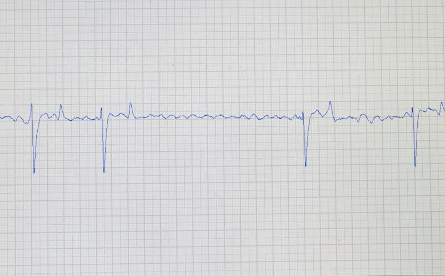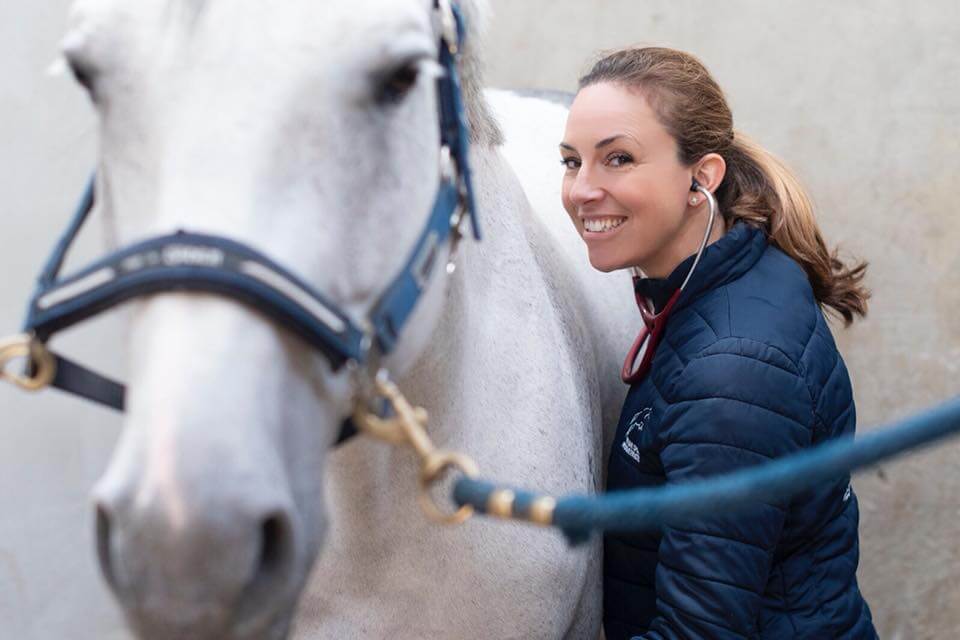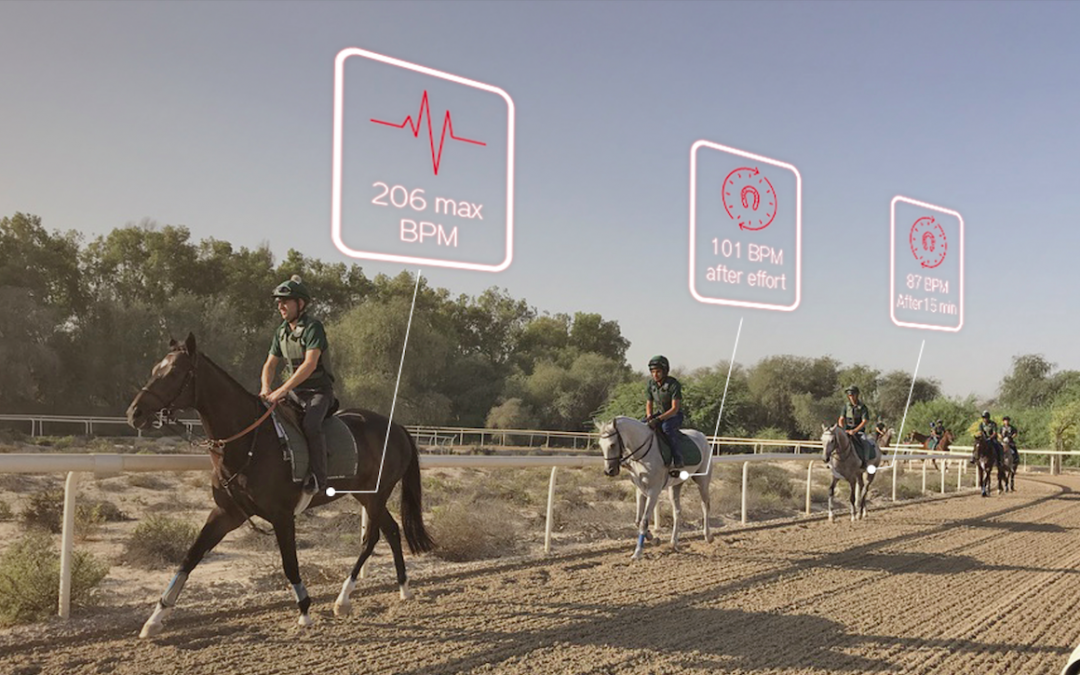Sudden death in racehorses is the natural death of an individual whose delay between the appearance of the first alarming symptoms and death is less than 48 hours. (according to the WHO). The particularity of such a death is that the horse appears healthy a priori. What makes it all the more brutal is that it is unexplained in more than one case out of two, despite the post-mortem examinations that are carried out.
In a study published in Le Nouveau Praticien Vétérinaire Equine by the Laboratoire de Pathologie Equine de Dozulé (equine pathology laboratory of Dozulé, a specialised equine unit of the ANSES), out of 194 cases of horses that died of sudden death, 37% were trotters and 32% were thoroughbreds. Racehorses are therefore the most affected by these brutal deaths. The wellbeing of the racehorse is one of Arioneo’s core values, and it is through innovations, such as Equimetre, that the whole team tries to offer solutions to the entire industry.
The causes of sudden death
Athlete horses are predisposed to this type of death because their physique is tested at all levels. Intense efforts can increase the risk. The racehorse, whose limits are constantly being pushed back, is particularly affected. The causes of sudden death can be grouped into three main families: cardio-respiratory failure, hemorrhagic shock, and central nervous system damage. However, in many cases, the causes of sudden death are not identified.
1. Cardiorespiratory failures
Cardiorespiratory failures, often caused by heart rhythm disorders, account for 56% of cases in horses that die of a sudden death whose causes were known. It is therefore important not only to know them but also to recognise them. Validated for the measurement of heart rate and heart variability (Ter Woort and al., 2020 Comparative Exercise Physiology), Equimetre offers an important help to detect them. Indeed, with the continuous recording of the ECG by the sensor, rhythm disorders can be detected during training.
Bleeding horses: Exercise-induced pulmonary haemorrhage (EIPH)
It is estimated that, depending on their discipline, 43 to 75% of horses are affected by EIPH after intense effort. In general, EIPH is a symptom of an underlying disease – for example, a horse that has had a viral infection with an inflamed heart can develop subsequent EIPH. Because the horse has a large and powerful heart, blood pressure is particularly high in the very fine blood vessels of the lung passages. Only 5% of horses with EIPH bleed from the nose, in the majority of cases, the blood remains in the lungs and is not visible externally, which makes the diagnosis more complex.
Often the cause of EIPH, respiratory pathologies can occur during a hard effort and are associated with breathing difficulties, a drop in performance or possible respiratory noises. If these signals are not taken into account in time, the horse may end up at a higher risk of sudden death.
Among horses that have died from sudden death, severe EIPH is often found at autopsy. It should therefore be borne in mind that fatal EIPH occurs in cases where the horse had a prior condition that compromised its cardiorespiratory system.
Heart diseases
Heart diseases can have different causes: inflammatory, infectious, or drug-induced.
The myocardium refers to the heart muscle, and the term myocarditis refers to inflammatory diseases of that muscle. Cardiomyopathy is a chronic heart disease that affects the ventricles and their ability to contract. Horses with severe myocarditis develop a variety of symptoms including tachycardia (increased heart rate), and tachypnea (increased respiration rate). These phenomena result in a decrease in performance.
Ventricular tachycardia is another disease of the heart that affects the ventricles and is manifested by an upward alteration in the resting heart rate. On the ECG, abnormal beats, and irregular oscillations of the horse’s heart rate, which can be between 100 and 120 bpm at rest alone, compared to a heart rate between 80 and 100 for a healthy horse.
Continuous use of Equimetre not only makes it possible to detect drops in performance, but also to investigate them thanks to the sports, cardiac and locomotor indicators presented on the Equimetre platform. Longitudinal monitoring of these parameters enables the early warning signs of these diseases to be quickly detected. Unusual heart rate during exercise or at rest, and poor performance during races or training will thus be an opportunity to investigate further with a veterinarian.
Heart rhythm abnormalities: dysrhythmia and atrial fibrillation
As the name suggests, this is an abnormal change in heart rhythm. These arrhythmias can be particularly problematic if they occur during exercise. As blood perfusion is significantly disrupted, the organs are no longer sufficiently irrigated which can affect the tolerance to exercise and even increase the risk of syncope.
Atrial fibrillation is the most common pathological heart rhythm disorder The cells in the atria contract in an uncoordinated and irregular manner. Heart rates on exertion can reach excessive values, even at slower speeds, and other potentially fatal arrhythmias can occur.

ECG of a horse suffering from atrial fibrillation
Source : Linkedin of Emmanuelle Van Erck
In her thesis “Etiology of sudden death in horses”, Nathalie CADEC explains: “ECG monitoring of cardiac activity during physical exercise (racing) in horses suspected of atrial fibrillation has made it possible to highlight the time it appears. Atrial fibrillation, of the paroxysmal type [i.e. which has lasted less than 7 days], occurs in the final part of the acceleration phase (just at the end of the acceleration peak) and induces the sudden deceleration of the horse”. All these elements are collected and analysed by EQUIMETRE (HR, speed, ECG).
2. Haemorrhagic shocks
Hemorrhagic shock occurs in 27% of sudden deaths. They are often inherent to a trauma (fall, injury, …) and the few cases of rupture of the aorta are very rare. We think in particular of the highly publicised case of Hickstead, a famous show jumping horse who died under the saddle of Eric Lamaze of a ruptured aorta in Verona during a World Cup competition in 2011. It is interesting to note that these accidents seem to affect more stallions, generally over 10 years old.
Intense effort obviously exposes horses to these shocks since the blood pressure in order to make the body function increases sharply, which can create sometimes extreme tension in the blood vessels which, if they are weakened, can rupture. Hemorrhagic shocks often follow a weakening of aneurysms that are difficult to detect during the horse’s lifetime.
3. Lesions of the central nervous system
These lesions can have several causes: trauma related to a fall, a shock… and several symptoms: respiratory distress, tachycardia, stumbling horse, … depending on the part of the nervous system that is affected. These lesions can occur after a traumatism (big falls on the head, in show jumping horses for example).
— Emmanuelle van Erck’s interview on sudden death in racehorses —
In what way is EQUIMETRE an innovation improving the well-being of horses?
EQUIMETRE is a tool that allows the horse to speak at work. Physiological parameters will be measured and these allow us to know if the horse is working in comfort and safety or not. When he has difficulties in training, either because he does not have the required qualities or because he has an underlying health problem, the parameters will be in the red and will be highlighted by EQUIMETRE – and this much more than if we rely on purely subjective criteria. The idea is to put numerical values on the trainer’s impressions and see if the abnormal values are repeated over the course of training, in which case this should become a concern.

Credits to Westergren Photography
What are the warning signs of the above-mentioned illnesses that the trainer should pay particular attention to?
Cardiac arrhythmias cause performance impairment and affect recovery. It is possible to look at the heart rate (HR) with EQUIMETRE to highlight abnormal HR and to have the electrocardiogram data collected by EQUIMETRE reviewed by your veterinarian to see if the horse has shown signs of abnormalities. Pulmonary haemorrhages will be noticed if the horse is bleeding from the nose, or if his heart rate has a longer recovery time after exercise because he is in a deficit of oxygen. In this case, it is necessary to look if there is a problem with the lungs.
A horse with pain, tendinitis or bone-related pain, for example, may have an alteration in the way he moves, so the parameters of pace and stride amplitude will change with increased heart rate. By combining all the parameters that EQUIMETRE allows to measure, it is possible to see what is going on with the horse: is it a lack of quality? Is it an underlying health problem?
How can the veterinarian detect these abnormalities? What tools do veterinarians have at their disposal today?
Apart from EQUIMETRE use, a lot of energy has to be put into watching the horses at work, which means a veterinary presence, putting a heart sensor and an electrocardiograph on them. For the moment, no system allows measuring the parameters of gait, speed, HR and ECG at the same time, except EQUIMETRE. Detecting a respiratory problem often requires additional tests, which can be time-consuming since the veterinarian must be present during training. Depending on the pathology, endoscopies, ultrasounds, X-rays or other tests may be necessary.
Is EQUIMETRE a tool for the prevention of sudden death phenomena? Do you think that EQUIMETRE could reduce the number of horses dying of sudden death?
A horse with cardiac arrhythmia does not generally develop it overnight without warning signs. So, if we can equip this horse with an Equimetre during training, we will be able to detect these signs. Rhythm disturbances can be highlighted on his ECG, if necessary. These may result in the death of the horse during the race. Fortunately, they can be detected by the warning signals visible during intense training recorded with the sensor. This helps to avoid enrolling a horse in a race that cannot hold the race and may collapse at the end of the race. Ideally, trainers should be aware of the importance of detecting pathologies as early as possible to avoid making a potentially endangered horse race.
The world of racing is regularly under fire from critics regarding the well-being of horses. Can we associate sudden death with shortcomings in the consideration of the well-being of the top horse athlete?
We try our best to take into account the well-being of the athletic horse with the means we have. Until now, the veterinary community has not had very effective means of monitoring horses in training, and as a result, we have not been able to prevent these problems. In Australia, an abnormally high number of foreign horses have had fractures during races because of the terrain, which would be much more constraining than European or American tracks. As a result, the authorities now require horses to undergo a CT scan before racing in the country to exclude a horse that might be at risk of fractures. However, with EQUIMETER these are the things that can be looked at indirectly because we can observe the horse’s comfort during training, thanks in particular to the combination of heart rate and locomotion data on different types of grounds, gauge its sensitivity and thus choose to engage it or not according to its abilities. Well-being is improved because it is possible to know in advance why the horse is not at its maximum capacity and to have an overall view of the horse, so that they can only run at their best.
Do you think that the racehorse is a sufficiently supervised athlete whose well-being is guaranteed?
Preserving the horse’s health is at the heart of every trainer’s concerns. However, the environment remains fairly traditional and it takes years of experience to spot subtle problems. We are currently living through an exciting period of evolution: we now have the opportunity to improve the prevention of problems thanks to the new tools at our disposal. The story has been the same with equipment designed to increase safety in cars such as airbags; it’s all in the interest of preserving the health of the driver, and here of the horse.
Keywords: sudden death in racehorses, racehorse pathologies, cardiac issues, prevention, equine health, arrhythmias, telemedicine, data analysis, ecg during training, racehorse monitoring

